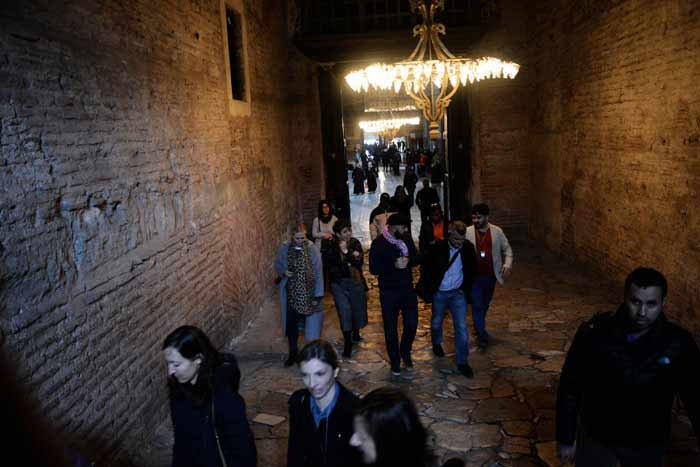The De Cerimoniis is a work of compilation produced for the emperor Constantine VII Porphyrogenitus (913-59), and partially revised or updated under Nikephoros II Phokas (963-9), perhaps under the direction of Basil the Nothos, or Parakoimomenos. It describes ceremonial procedures, often in minute detail, from the perspective of court officals, and addresses other matters insofar as they affected the day-to-day rhythm of life in Constantinople. The treatise has survived in only two manuscripts, the first long known, the second only recently identified in two parts.
The Leipzig manuscript (Leip. Univ. Lib. 28), upon which all current editions are based, was produced in the later tenth century, probably during the reign of Nikephoros II. The second manuscript dates from the same period, but in the eleventh century was scraped clean and over-written with a new text. One half of this palimpsest manuscript remained in Constantinople/Istanbul, where it was identified by C. Mango and I. Sevcenko (Dumbarton Oaks Papers, 1960).The second half was identified in the Vatopedi Monastery at Mount Athos by Otto Kresten. A treatise on Imperial Expeditions precedes the text in the Leipzig ms., but should not be considered as part of the De Cerimoniis (nor as an appendix, as in Reiske’s edition).
Commentary by Ann Moffatt and Maxeme
It has been edited separately by J. Haldon. We await a new edition and at least two translations and commentaries on the De Cerimoniis proper. An English translation with commentary by Ann Moffatt and Maxeme Tall is to be published in the series Byzantina Australiensia, and a second collaborative effort to edit and translate the text is in progress in Paris. So far, this has resulted in one fascicule of the occasional journal Travaux et mémoires ( vol. 13, 2000). An article by Averil Cameron presents an excellent English introduction to the De Cerimoniis.
Many chapters of the De Cerimoniis, although presented as prescriptive texts, are in fact descriptions of actual ceremonies and events stripped of specifics. (In the examples of middle Byzantine coronations presented in translation, this stripping is represented by the replacement of the names of the emperor and co-emperor with the non-specific ho deina, “so-and-so”). Divided into two books, Book One contains 97 chapters, while Book Two contains 56.
Book One is drawn from historical and documentary sources, of which chapters 1-83 comprise prescriptive accounts of holy day processions (1-37), and secular ceremonies (38-83), including twelve unrevised chapters (84-95) from a sixth-century manual by Peter the Patrician. Chapters 96 and 97 clearly date from the reign of Nikephoros II. Book Two, it is stated, is drawn from oral accounts, but it is clear that the chapters include written historical material (including those relating to promotion ceremonies).
Read More about Byzantine society produced the harmonious






